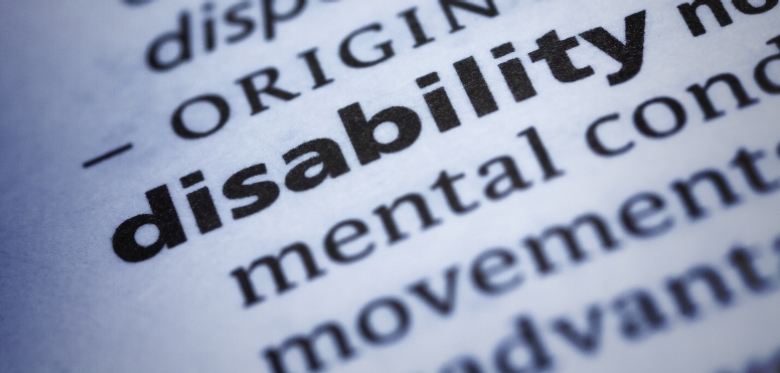Discrimination is the unequal treatment of individuals because of a protected characteristic as defined under the Equality Act 2010. This includes discrimination because of race, gender, disability and sexual orientation, to name a few.
Universities and colleges must comply with their duties set out in the Equality Act 2010. If someone has been discriminated against by a university, they may be able to bring a claim for discrimination in the County Court, but if they are to do so then it must be done within six months less one day of the act of discrimination.
What is the definition of disability?
Under the Equality Act 2010, a person with a disability is someone who has physical or mental impairment which has a substantial and long-term adverse effect on the person’s ability to carry out day-to-day activities.
For example, if a person is diagnosed with a condition and the effect of that condition requires the prescription of medication to enable them to go about their day to day activities without being prohibited from doing so by the symptoms of it, and this lasted or will last for more than 12 months, this person would likely be regarded as having a disability under the Equality Act 2010.
Claims of discrimination
The possible claims of discrimination under the Equality Act 2010 are:
- Direct discrimination
- Indirect discrimination
- Failure to make reasonable adjustments
- Discrimination arising out of a disability
- Harassment
- Victimisation
Direct discrimination
Direct discrimination for disability is where a person is treated less favourably due to their disability.
For example: a prospective student applies to study medicine at a university and attends an interview at the campus. During the interview, the student discloses to the interviewer that they suffer from anxiety disability and because of this, the prospective student is not awarded a place on the course.
Indirect discrimination
Indirect discrimination occurs where a university applies a provision, criterion or practice to all students which puts students with disabilities at a disadvantage when compared to others.
For example: A university implementing a provision, criterion or practice to only issue lecture notes on white paper may put a student with dyslexia at a disadvantage when compared to others.
It is important to note that even if it can be established that the student has been put at a disadvantage due to the provision, criterion or practice, the university may have a defence if it could prove that the provision, criterion or practice is a proportionate means of achieving a legitimate aim.
Discrimination arising from disability
Discrimination arising from disability is where a person is treated unfavourably because of something arising in consequence of that disability.
For example: a student suffers with ADHD and due to their condition, they ask a lot of questions but they are banned by their tutor from asking questions in lectures.
However, like with indirect discrimination, the university may have a defence available if they can show that the treatment is a proportionate aim of achieving a legitimate aim.
Failure to make reasonable adjustments
A failure to make reasonable adjustments is where a person with a disability makes a request to their university for certain adjustments to be made to ensure that their disability is not a barrier to their access to education and the university does not make the adjustments.
For example: a student with spinal condition makes a request to their university for an ergonomic chair during seminars and exams. However, the university fail to implement this adjustment on the basis that the chair would cost £80.00.
Whether a university is obliged to implement a reasonable adjustment will depend upon the reasonableness of the adjustments requested. As a result, the university will consider factors such as the cost and practicality of implementing the adjustment and what level of disruption would be caused by doing so.
Harassment
Harassment is where a person has been subjected to unwanted conduct relating to their disability and the conduct has the purpose or effect of violating the person’s dignity or creating an intimidating, hostile, degrading, humiliating or offensive environment to that person.
For example: a student who has a visible physical impairment is openly and repeatedly referred to in a derogatory manner in the context of their condition.
In deciding whether the conduct constitutes harassment, the court will consider the person’s perception of the comments made to them, the other circumstances of the case and whether it is reasonable for the conduct to have the effect of violating that person’s dignity.
Victimisation
Victimisation can be where a person is subjected to a detriment because they have raised a complaint of discrimination or supported another individual who has raised such a complaint.
For example: a student believes that they are being treated differently by a lecturer because of their apparent disability and raises a complaint. A day after raising the complaint, the student is informed that they are being removed from the course.
If you feel that you have been a victim of discrimination, please contact our specialist discrimination team on 01616 966 229.
By Charlie Bradbury, employment and discrimination advisor.




Comments